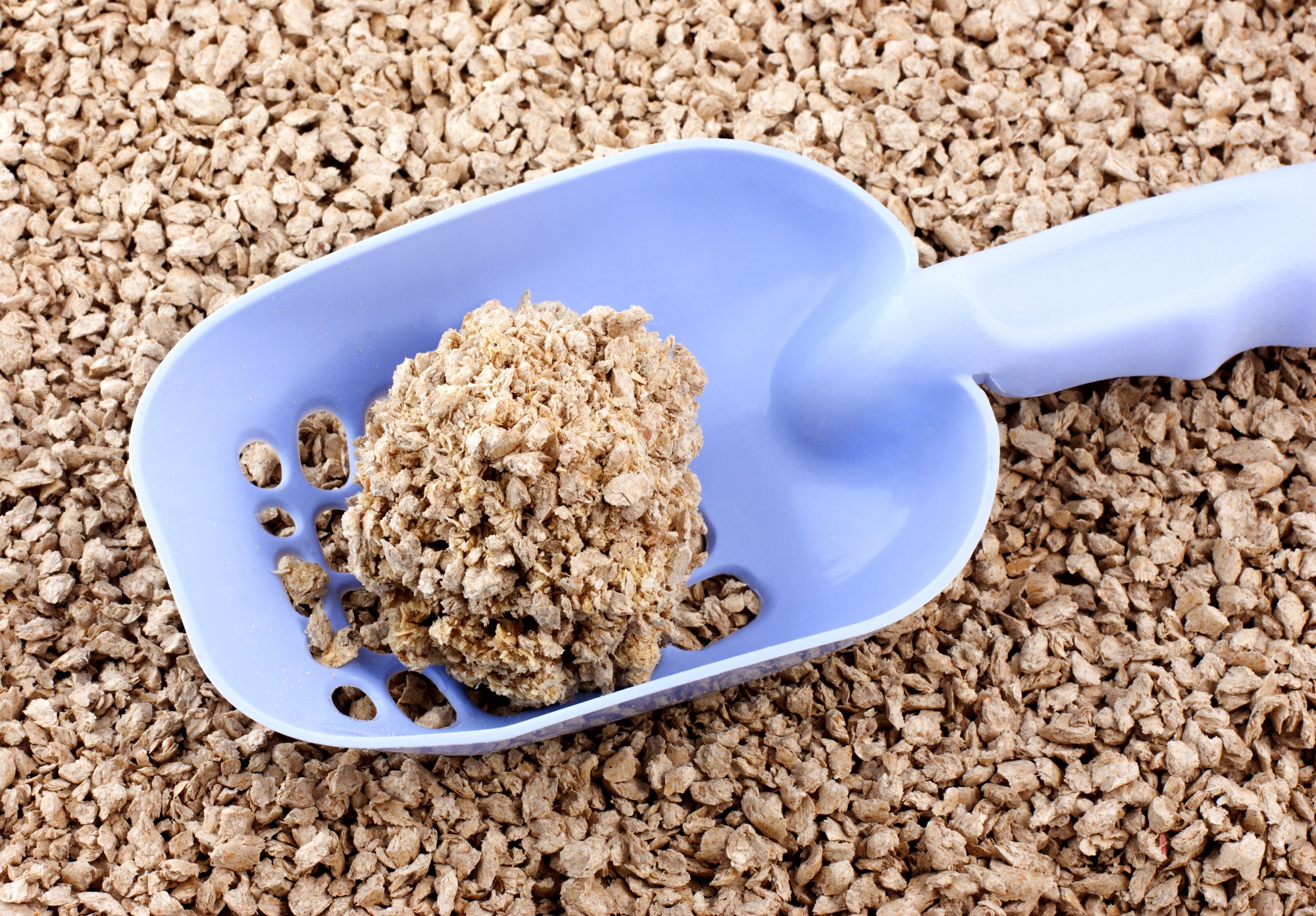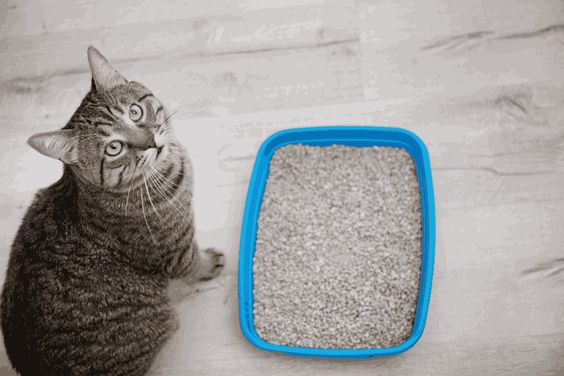How Often to Change Cat Litter: Complete Guide
Being a cat owner, you need to take care of your cats and their hygiene. You need to ensure that they are living in a clean and odor-free environment.
To make this happen, you need to replace the used cat litter occasionally.
The frequency of changing the cat litter depends on several factors discussed later in the article.
However, daily scooping is a great practice that you can follow.
In this blog, you will find out the different cat litter that is available, the stepwise process of cleaning the cat litter box or scooping the litter, how often to change a cat litter box, and even come across some tips for making the whole process of cleaning litter easy for you.
When to Change Cat Litter?
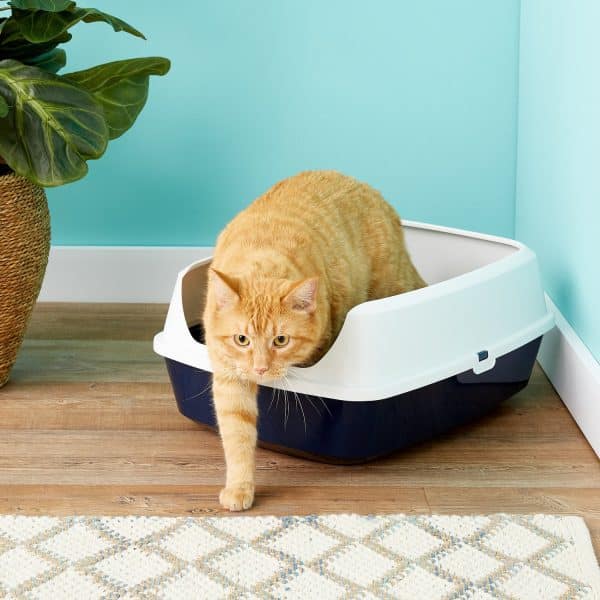
Keeping your cat’s litter is essential for their health and neatness. There are some signs that you need to look out for to understand when you need to change the cat litter. All the signs are listed below:
- The first thing to check is whether there is an unpleasant smell. Your nose will never lie. If your cat’s litter box is smelly, it means you need to change the litter as soon as possible. Cat litter is odorless, so keep track of the same.
- The other sign you must look out for is if the litter is clumping together. This means that the litter was used for way too long by your cats and needs to be replaced with fresh litter.
- Cats love to stay in clean places, so if you see your cat avoiding the litter, it means the litter is too dirty.
- If you see that your cat is tracking litter throughout the house, then the litter is fine. So, when the litter is too fine, it sticks to their paw.
- Cats occasionally dig in the litter, and if they are unable to do that, it means that the litter is too soft or too hard.
Importance of Changing Cat Litter
Changing cat litter regularly has numerous benefits, not just for your cat but also your house.
Regular cleaning helps to keep the litter box fresh and clean. It controls the poo smell in the house and extends the life of the litter box.
Moreover, you also save money in the long run since you have to waste less litter. There is a reduction in the mess created in the house, which keeps your cat happy and clean.
Types of Cat Litter You Should Know
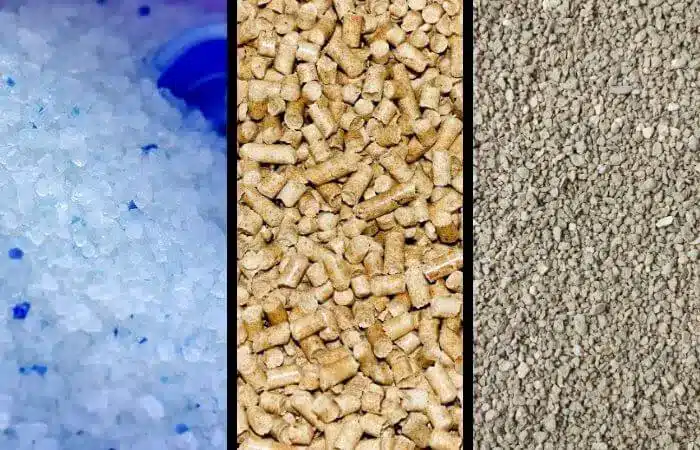
Choosing the right cat litter is essential for your cat and your home. There are many types of cat litter, and here we have listed the most common ones to choose from. Pros and cons are also discussed for you to make the right choice.
1. Clay Cat Litter
Clay cat litter is one of the most used types, which is highly affordable and needs less scooping. However, they are dusty and easily trackable. They are not eco-friendly or biodegradable. Also, they are easily available in the market.
2. Silica or Crystal Cat Litter
Silica cat litter is another type that is low in dust and lightweight. Your cat can easily track them, and they are not eco-friendly. They are low maintenance and non-toxic. However, they are quite pricey and are uncomfortable for a cat’s paws.
3. Tofu Cat Litter
They are a new type of cat litter in the market made using soybean fiber. They are eco-friendly and flushable. This non-toxic tofu cat litter is dust-free but available at a high cost. The only variety available is clumping, long-lasting cat litter.
4. Paper Pellet Cat Litter
They are made using recycled newspapers, making them highly environmentally friendly. They are unscented and biodegradable. They are highly affordable and are only available in the non-clumping variety. They need to be changed frequently.
5. Walnut Cat Litter
This is lightweight walnut cat litter, which is daily low in dust. It has decent odor control and is toxic for your cats. They are dark in color, making scoping quite difficult. They are available in both clumping and on-clumping varieties.
6. Corn Cat Litter
They are biodegradable and compostable. They are environment-friendly and non-toxic. They can be flushed down the toilet and cause low dust. But remember that they can be tracked, making your house messy. In addition, they control odor very well.
7. Pine Pellet Cat Litter
Another great alternative for cat litter is pine pellets. They have a natural pine scent and are highly eco-friendly. It has an uncomfortable texture and can be difficult to clean, which makes it a bit disadvantageous at times. However, there is low tracking when this cat litter is used.
8. Grass Cat Litter
Grass cat litter is available in both clumping and non-clumping textures. They are made using grass seed and are biodegradable and renewable. You can flush them through the toilet, which makes cleaning litter much easier.
Factors to Consider When Choosing a Cat Litter
Before choosing a cat litter, you need to keep in mind that there are certain things you need to keep in mind. Those factors are discussed below:
1. The Health of Your Cat
Cat litter should not create health issues for your cat or humans. Some cat litter can give rise to respiratory issues due to chemical preservatives, sodium bentonite, and much more. These chemicals can harm your cat even when they lick their paws. So be very careful of the kind of act litter you are using.
2. Clumping or Non-Clumping
Using clumping litter helps make the cleaning process quite easy for cat owners. They can absorb moisture very well. At the same time, these clumping litters, like clay, can be consumed by cats, harming them severely. Non-clumping litters are not good at absorbing but do not need regular replacement.
3. Whether It is Eco-Friendly
Make sure you are using eco-friendly letters that do not harm the environment. Using litter with chemicals can be dangerous for both cats and the environment.
4. Cost
Another thing to consider is whether you have the amount of money to buy a specific type of cat litter. It would be best to consider how frequently you must change this litter and choose a type accordingly.
How to Scoop a Litter Box
Once you know how often you need to clean the litter box, you will also need to know how you can scoop a litter box with ease. Follow the steps given below to scoop the litter box effectively:
- Step 1: Firstly, wear your gloves.
- Step 2: You need to remove any clumps of urine or feces that are large.
- Step 3: Next, sift through the left-out litter with the help of a litter scoop.
- Step 4: Now, put these waste clumps in a trash bag or a container.
- Step 5: Keep sifting the litter until all the bits of the waste are removed.
- Step 6: Now, even out the litter in the litter box and dispose of the waste properly.
- Step 7: Lastly, clean your hands properly using soap.
You need to dispose of the waste properly so that no odor is left in the house. The best way is to tie the trash bag and place it in the trash bin.
How to Change Litter Boxes
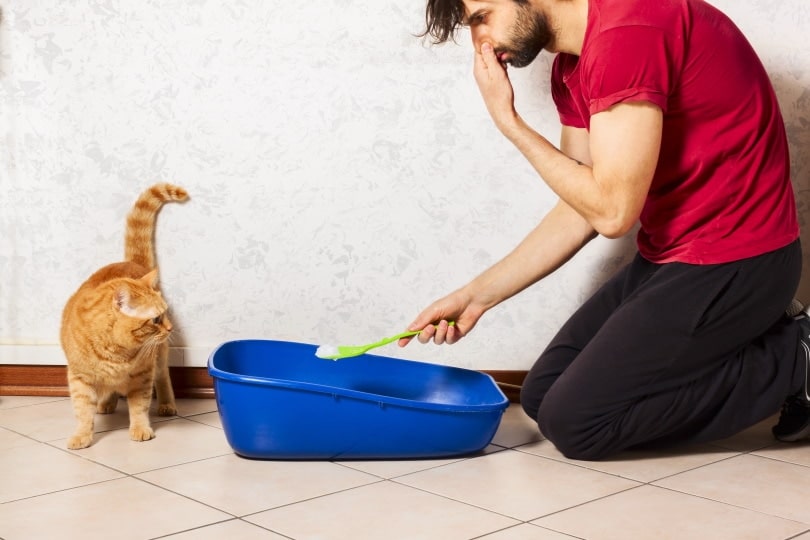
Whether you use clumping litter or non-clumping litter, changing the litter boxes is the same. Follow these steps to change your litter boxes in the best way possible:
- Step 1: At the end of the litter box, place a garbage bag. Now, tilt the litter box and pour all the litter into this bag.
- Step 2: Using a litter scoop, scrape out any cat litter stuck on the pan. Or you can even take the litter box and dump its content into the garbage bin directly.
- Step 3: Now, properly wash the litter box with soap and water. Take a bristled scrub brush and clean it properly. Make sure that you are not using any bleach or chemicals, as that can leave a lingering smell that your cat won’t like.
- Step 4: Using a cotton towel or paper towel, dry the cat litter box.
- Step 5: Now, fill the litter box with 3 to 4 inches of fresh litter.
Tips on Changing Cat Litter Effectively
Changing cat litter is not enough; you must know how to dispose of it correctly. Find out these tips in detail below:
1. Select a High-Quality Cat Litter for Your Cat
Getting high-quality cat litter is essential since it can absorb better and provide better odor control for a longer period. This means you won’t have to change litter very frequently. Moreover, good quality litter clumps very well, making your task easier and eliminating the chances of creating dust.
2. Clean the Cat Litter Box Properly
Before you add in new litter, make sure you are cleaning it properly. Wipe the whole box, put mild detergent, and wash. This way, you can get rid of any bacteria or odor and make the litter box completely clean.
3. Scooping out Solid Waste Regularly
It is always advisable that you scoop out all the solids as soon as possible. This will keep the odor down and reduce bacteria levels.
4. Clean the Litter Box More Often
Every time you see that there is dirt or bad odor in the litter box, attempt to clean it right away. If you buy low-quality litter boxes due to having multiple litters, they might not be best at absorbing.
5. Change the Entire Content of The Box
The best thing to do is remove all the old litter and put in new litter. This will also help in getting rid of any odor and ensure that the box is clean for your cats to use
How Often Should You Change the Cat Litter?
Regarding the right frequency of changing cat litter, you must remember that it depends on the environment and your cats. However, it is advised that cat litter should be changed every 2 to 3 weeks. You can change it every week as well for a smell-free and clean surrounding.
Certain factors determine how often you should replace litter for your cats. Some of them are given below:
1. Number of Cats You Have
If you have more than one cat, you need to keep in mind that changing cat litter more often is important. More cats means more urination and more defecating, so make sure you are cleaning it daily to give your cats a better environment.
2. Type of Litter You Are Using
Clumping litters are good for absorbing and controlling odor, but still, they need to be changed every week. Non-clumping litter is not good at absorbing; thus, you can use it for over a week.
3. Health Issues of Your Cat
If your cat has health issues like urinary tract infections, change the litter occasionally. Not changing litters can give way to allergies and sensitivities.
Two Types of Litter Box Cleaning
1. By Scooping
There are two ways in which you can clean the litter. One is by scoping the solids using a scooping spoon. This way, you don’t have to change the whole pile of litter at once, thus saving you money.
2. By Changing
The other type of litter cleaning is changing the litter completely. You will have to do this every week or so. Replacing old litter with new litter helps in maintaining hygiene for your cats.
How to Dispose of Cat Litter
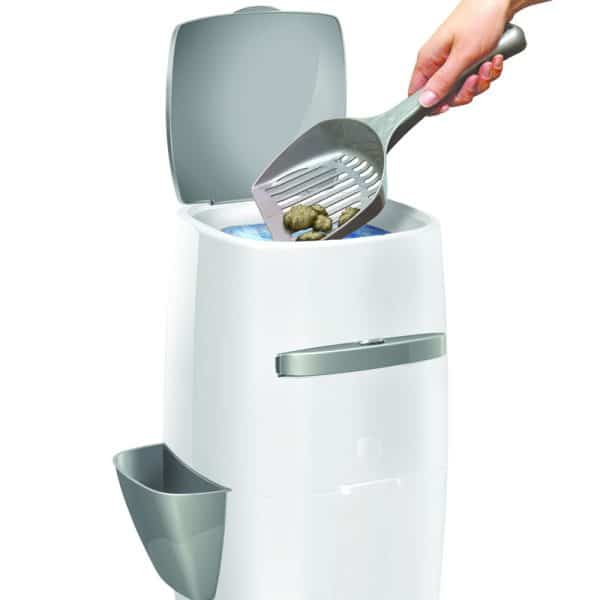
Disposing of cat litter is another task that needs to be done the right way. We have discussed 4 ways to dispose of your litter in the best possible way.
1. Keep One Trash Can to Throw Cat Litter
The first way is to dump all the cat litter into a trash bag. Certain trash bins are designed just for putting cat litter. You can also use plastic trash cans or traditional tin, for that matter.
2. Get Flushable Litter
You can get litter that dissolves in water, which means you can directly flush it into the sewer. Don’t try to do this with other litter as they can clog the pipes and hence make you pay a hefty sum for the repair.
3. Purchase Compostable Litter
The best option is getting a compostable litter, which, when used, you can layer with carbon and nitrogen. Check for the temperatures and moisture and keep them to decompose. You can later use the product to put them around plants and flower beds.
4. Buy Self-Cleaning Litter Boxes
The best thing you can do is get a self-cleaning litter box. Once your cat has done their business, the sensors give a signal that the poop will be transferred to a trash bag. Once the trash bag is full, they send signals to change the bag. These equipments make your task easier.
Where is the Best Place to Put Your Litter Boxes?
Keeping the litter boxes in the right place is essential so that your cat can access them easily and also avoid making a mess in the house. Choose a quiet and easily accessible place to keep the litter box. Make sure you are using one litter box for each cat.
Put a curtain to provide privacy to your cats when they do their business. Do not keep the litter box near cat food, and try to keep them on every floor. Do not keep it in humid locations, and remove it from places where people in the house can get hurt.
Conclusion
Changing cat litter is an essential part of ensuring that your cat is healthy and clean at all times. A well-maintained litter box and proper litter management are required to keep your cat comfortable.
Changing cat litter every day helps your cats to have a clean place to do their business. Besides, this helps their mental and physical well-being. Getting the right litter helps reduce the odor and makes scooping waste manageable.
Knowing how to dispose of cat litter correctly is also an essential part of litter management. Placing the litter boxes in the right place is another important part of keeping the feline companion and your house clean and tidy.
Frequently Asked Questions
How Much Litter Should Be Used in The Box?
You should use at least 2 to 3 inches of cat litter and fill the litter box. However, you should check the manufacturer’s recommendations for the particular litter you are using.
What to Do if My Cat Refuses the New and Fresh Cat Litter?
Even though it is not always advisable, you can mix the new litter with the old litter and slowly introduce completely new litter over some time. This will help them to adjust to the change.
Can I Flush the Cat Litter Down the Toilet?
This is not recommended as it can clog pipes and harm sewage systems. It is best not to flush your cat litter until you have read the manufacturer’s guidelines.
What is the Best Way to Disinfect the Litter Box?
Once you have thrown out the previous litter, clean it with mild soap and water. Rinse it thoroughly and let it dry. Once it is completely dry, put in the new and fresh litter.

